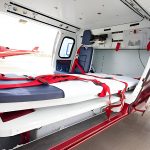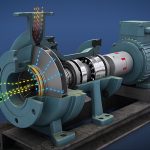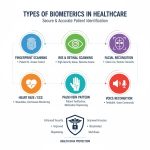Key Takeaways
- The global aortic stent grafts market is projected to grow from USD 3.8 billion in 2024 to USD 5.9 billion by 2035, at a CAGR of 5.7%.
- Market growth is driven by the rising prevalence of aortic aneurysms, aging populations, and technological advancements.
- The market is segmented by product type (abdominal and thoracic), end-users (hospitals and ambulatory surgical centers), and region.
- North America leads the market, while Asia Pacific is the fastest-growing region.
- Major players are focusing on innovation, R&D, and strategic partnerships.
- Challenges include high costs, regulatory hurdles, and limited awareness in developing regions.
- Trends include a shift toward minimally invasive procedures, advanced materials, and increased education among healthcare professionals.
Market Overview and Revenue Projections
The Global Aortic Stent Grafts Market is experiencing robust growth, with analysts at Vantage Market Research projecting its value to rise from USD 3.8 billion in 2024 to USD 5.9 billion by 2035. This represents a healthy compound annual growth rate (CAGR) of 5.7% between 2025 and 2035. The primary driver behind this expansion is the increasing incidence of aortic aneurysms, particularly among aging populations worldwide. As life expectancy rises, so does the prevalence of conditions such as abdominal aortic aneurysm (AAA) and thoracic aortic aneurysm (TAA), both of which are life-threatening if left untreated.
Aortic stent grafts, also known as endovascular stent grafts (EVAR), have revolutionized the management of these aneurysms by offering a minimally invasive alternative to open surgery. The procedure involves inserting a synthetic graft through a small incision in the groin and positioning it within the aorta to reinforce the weakened vessel wall. Compared to traditional surgical methods, this approach significantly reduces recovery times, hospital stays, and overall morbidity.
Several factors are fueling the market’s growth trajectory. Technological advancements have led to the development of more flexible, durable, and customizable stent grafts, making the procedure safer and more effective. Additionally, the growing adoption of endovascular procedures in both developed and emerging markets is expanding the patient pool. Increased awareness among healthcare professionals and patients about the benefits of early intervention is also contributing to higher diagnosis and treatment rates.
The impact of aging populations cannot be overstated. As the proportion of elderly individuals rises, so does the demand for aortic stent grafts. This demographic shift is particularly pronounced in regions such as North America, Europe, and parts of Asia Pacific, where healthcare infrastructure is well-developed and screening programs are more widespread. Furthermore, the market is benefiting from favorable reimbursement policies in many countries, which are making these life-saving procedures more accessible. The aortic stent grafts market is poised for significant growth over the next decade, driven by demographic trends, technological innovation, and increasing awareness. Companies operating in this space are well-positioned to capitalize on these opportunities, provided they can navigate the challenges of cost, regulation, and competition.
Segmentation of Aortic Stent Grafts
The aortic stent grafts market is segmented along several key dimensions, each of which plays a critical role in shaping industry dynamics and growth opportunities. The primary segmentation is by product type, with two main categories: abdominal aortic stent grafts and thoracic aortic stent grafts.
Abdominal aortic stent grafts are designed specifically to treat abdominal aortic aneurysms (AAA), which are more common than thoracic aneurysms. These devices are engineered to fit the unique anatomical requirements of the abdominal aorta, providing a secure seal and minimizing the risk of endoleaks. The demand for abdominal stent grafts is particularly high in regions with aging populations, as the incidence of AAA increases with age.
Thoracic aortic stent grafts, on the other hand, are used to treat thoracic aortic aneurysms (TAA). These grafts must withstand higher pressures and are often more complex in design. While less common than AAA, TAA can be equally life-threatening, and the adoption of thoracic stent grafts is rising as awareness and diagnostic capabilities improve.
Another important segmentation is by end-user, with hospitals and ambulatory surgical centers (ASCs) being the primary settings for aortic stent graft procedures. Hospitals account for the largest share of the market, owing to their advanced infrastructure, skilled personnel, and ability to handle complex cases. However, ASCs are gaining ground due to their cost-effectiveness, shorter wait times, and growing acceptance of minimally invasive procedures. This shift is particularly evident in developed markets, where healthcare systems are under pressure to reduce costs and improve efficiency.
Regional segmentation reveals significant variations in market share and growth rates. North America currently dominates the market, thanks to its advanced healthcare infrastructure, high prevalence of aortic aneurysms, and strong presence of leading manufacturers. Europe follows closely, with a well-established network of hospitals and a growing focus on minimally invasive interventions. Asia Pacific is emerging as the fastest-growing region, driven by rising healthcare investments, improving diagnostic capabilities, and increasing awareness among both clinicians and patients. Latin America and the Middle East & Africa represent smaller but steadily growing markets, with untapped potential as healthcare access improves. The segmentation of the aortic stent grafts market highlights the diverse needs and opportunities across product types, end-users, and regions. Companies that can tailor their offerings to these specific segments are likely to achieve the greatest success in this dynamic and evolving market.
Regional Analysis and Growth Rates
The global aortic stent grafts market exhibits distinct regional dynamics, with each geography presenting unique growth drivers, challenges, and opportunities. North America stands out as the clear market leader, accounting for the largest share of global revenue. This dominance is underpinned by several factors, including a high prevalence of aortic aneurysms, advanced healthcare infrastructure, and widespread adoption of minimally invasive procedures. The presence of leading manufacturers and robust reimbursement policies further bolsters the region’s position.
In the United States, for example, the combination of an aging population, high rates of cardiovascular disease, and proactive screening programs has led to a steady increase in the number of aortic stent graft procedures. Canada also contributes significantly to regional growth, with a strong focus on innovation and patient outcomes. The North American market is expected to maintain its leadership position over the forecast period, although growth rates may moderate as the market matures.
Asia Pacific is emerging as the fastest-growing region in the aortic stent grafts market, with a projected CAGR well above the global average. This rapid expansion is driven by several converging trends. First, the region is experiencing a demographic shift, with a rising proportion of elderly individuals who are at higher risk for aortic aneurysms. Second, healthcare infrastructure is improving rapidly, particularly in countries such as China, India, and Japan. Investments in hospital facilities, diagnostic equipment, and skilled personnel are making advanced procedures like EVAR more accessible to a broader patient base.
Moreover, increasing awareness among both healthcare professionals and the general public is leading to earlier diagnosis and intervention. Governments in the region are also playing a proactive role by implementing screening programs and supporting research initiatives. As a result, Asia Pacific is expected to be a key engine of growth for the global market over the next decade.
Europe occupies a strong position in the global market, with a well-established network of hospitals and a high standard of care. The region benefits from a collaborative approach to research and innovation, with leading academic centers and industry players working together to advance stent graft technology. However, growth rates in Europe are somewhat constrained by economic pressures and regulatory complexities, which can slow the adoption of new devices.
Latin America and the Middle East & Africa represent smaller but promising markets. In Latin America, rising healthcare investments and improving access to advanced procedures are driving steady growth. The Middle East & Africa region is also seeing increased adoption of aortic stent grafts, particularly in wealthier countries with advanced healthcare systems. However, challenges such as limited infrastructure and lower awareness levels continue to restrain market expansion in these regions. Regional analysis underscores the importance of a tailored approach to market entry and expansion. Companies that can navigate the unique dynamics of each region—whether it’s regulatory requirements, reimbursement policies, or patient demographics—will be best positioned to capture growth opportunities in the global aortic stent grafts market.
Competitive Landscape and Key Players
The aortic stent grafts market is characterized by intense competition, with a mix of established multinational corporations and innovative startups vying for market share. Leading players in the industry include Medtronic plc, Cook Medical, W. L. Gore & Associates, Terumo Corporation, and Endologix LLC, among others. These companies have built strong reputations based on product quality, clinical outcomes, and a commitment to innovation.
- Medtronic plc is widely recognized as a market leader, with a comprehensive portfolio of aortic stent grafts and a global presence. The company invests heavily in research and development, focusing on next-generation devices that offer improved flexibility, durability, and ease of deployment. Medtronic’s strategic partnerships with hospitals and research institutions have enabled it to stay at the forefront of technological advancements.
- Cook Medical is another major player, known for its innovative approach to stent graft design and manufacturing. The company emphasizes customization, offering a range of devices tailored to individual patient anatomies. Cook Medical’s commitment to clinical research and education has helped it build strong relationships with healthcare providers worldwide.
- L. Gore & Associates is renowned for its expertise in advanced materials, particularly expanded polytetrafluoroethylene (ePTFE), which is used in many of its stent graft products. The company’s focus on material science has resulted in devices that are both durable and biocompatible, reducing the risk of complications and improving patient outcomes.
- Terumo Corporation and Endologix LLC are also significant contributors to the market, each bringing unique strengths in product development and market reach. Terumo’s global footprint and commitment to quality have made it a trusted partner for healthcare providers, while Endologix is known for its innovative solutions for complex aortic anatomies.
Innovation is a key differentiator in the competitive landscape. Leading companies are investing in the development of next-generation stent grafts that offer enhanced flexibility, better sealing, and improved long-term durability. Many are also exploring the use of advanced imaging technologies and digital tools to support preoperative planning and intraoperative guidance.
Strategic approaches such as mergers and acquisitions, partnerships, and geographic expansion are common as companies seek to strengthen their market positions. For example, collaborations with academic institutions and research centers are helping to accelerate the pace of innovation and bring new products to market more quickly. The competitive landscape of the aortic stent grafts market is dynamic and rapidly evolving. Companies that can combine technological innovation with strategic partnerships and a deep understanding of clinical needs are likely to emerge as leaders in this high-growth sector.
Challenges and Opportunities in the Market
Despite its strong growth prospects, the aortic stent grafts market faces several challenges that could restrain expansion. One of the most significant obstacles is the high cost of stent graft devices and associated procedures. While minimally invasive techniques offer clear benefits in terms of recovery and outcomes, the upfront costs can be prohibitive, particularly in regions with limited healthcare budgets or inadequate insurance coverage.
Regulatory hurdles also pose a challenge, as the approval process for new medical devices is often lengthy and complex. Companies must navigate a patchwork of regulations across different countries, each with its own requirements for clinical data, safety, and efficacy. This can delay product launches and increase development costs, particularly for smaller firms with limited resources.
Limited awareness and diagnostic capabilities in developing regions further constrain market growth. Many patients with aortic aneurysms remain undiagnosed until the condition becomes life-threatening, reducing the window of opportunity for effective intervention. Efforts to improve screening and education are critical to expanding the market and improving patient outcomes.
Despite these challenges, the market is ripe with opportunities. Technological innovation is opening new frontiers, with advances in materials science, imaging, and device design making stent grafts safer, more effective, and easier to deploy. The development of customizable and branched stent grafts is enabling the treatment of more complex anatomies, expanding the pool of eligible patients.
The evolving regulatory landscape also presents opportunities for companies that can adapt quickly and demonstrate the value of their products. Regulatory agencies are increasingly recognizing the benefits of minimally invasive procedures and are working to streamline approval processes for innovative devices. Companies that invest in robust clinical data and engage proactively with regulators are likely to gain a competitive edge.
Finally, the growing emphasis on value-based healthcare is creating opportunities for companies that can demonstrate cost-effectiveness and improved patient outcomes. As healthcare systems seek to optimize resource allocation, stent-grafts that reduce hospital stays, complications, and readmissions are likely to gain favor. While the aortic stent grafts market faces significant challenges, the opportunities for growth and innovation are substantial. Companies that can navigate the complexities of cost, regulation, and awareness while leveraging technological advances are well-positioned to succeed in this dynamic market.
Trends Shaping the Future of Aortic Stent Grafts
Several key trends are shaping the future of the aortic stent grafts market, with implications for manufacturers, healthcare providers, and patients alike. One of the most significant is the increasing preference for minimally invasive solutions. As patients and clinicians seek to minimize surgical risks and recovery times, endovascular procedures are becoming the standard of care for aortic aneurysm repair. This trend is expected to accelerate as device technology continues to improve.
Advances in stent graft technology and materials are also driving market evolution. The development of more flexible, durable, and biocompatible materials is enabling the creation of devices that can accommodate a wider range of anatomies and reduce the risk of complications. Innovations such as branched and fenestrated stent grafts are expanding the indications for endovascular repair, allowing treatment of more complex aneurysms that were previously considered inoperable.
Digital health and imaging technologies are increasingly important in preoperative planning and intraoperative guidance. High-resolution imaging, 3D modeling, and artificial intelligence are helping clinicians select the optimal device and ensure precise placement, improving outcomes and reducing the risk of complications.
Growing awareness and education in healthcare settings are also contributing to market growth. As clinicians become more familiar with the benefits of endovascular repair and as patients are better informed about their treatment options, the adoption of aortic stent grafts is expected to rise. Educational initiatives, professional training programs, and patient advocacy efforts are all playing a role in this trend.
Finally, the shift toward personalized medicine is influencing the development of stent grafts that can be tailored to individual patient anatomies and risk profiles. Customizable devices and patient-specific planning are expected to become increasingly important as the market matures.
In summary, the future of the aortic stent grafts market will be shaped by a combination of technological innovation, evolving clinical practices, and increased awareness. Companies that can anticipate and respond to these trends will be well-positioned to lead the market in the years ahead.
FAQs
- What factors are driving the growth of the global Aortic Stent Grafts Market?
- How does the CAGR of 5.7% from 2025 to 2035 impact investment opportunities in the Aortic Stent Grafts Market?
- What are the key applications of aortic stent grafts in medical treatments?
- What advancements in technology are influencing the development of aortic stent grafts?
![[Market Research Reports] – Research Google News Blog | VMR.Biz](https://www.vmr.biz/wp-content/uploads/2022/12/logo-removebg-preview.png)











